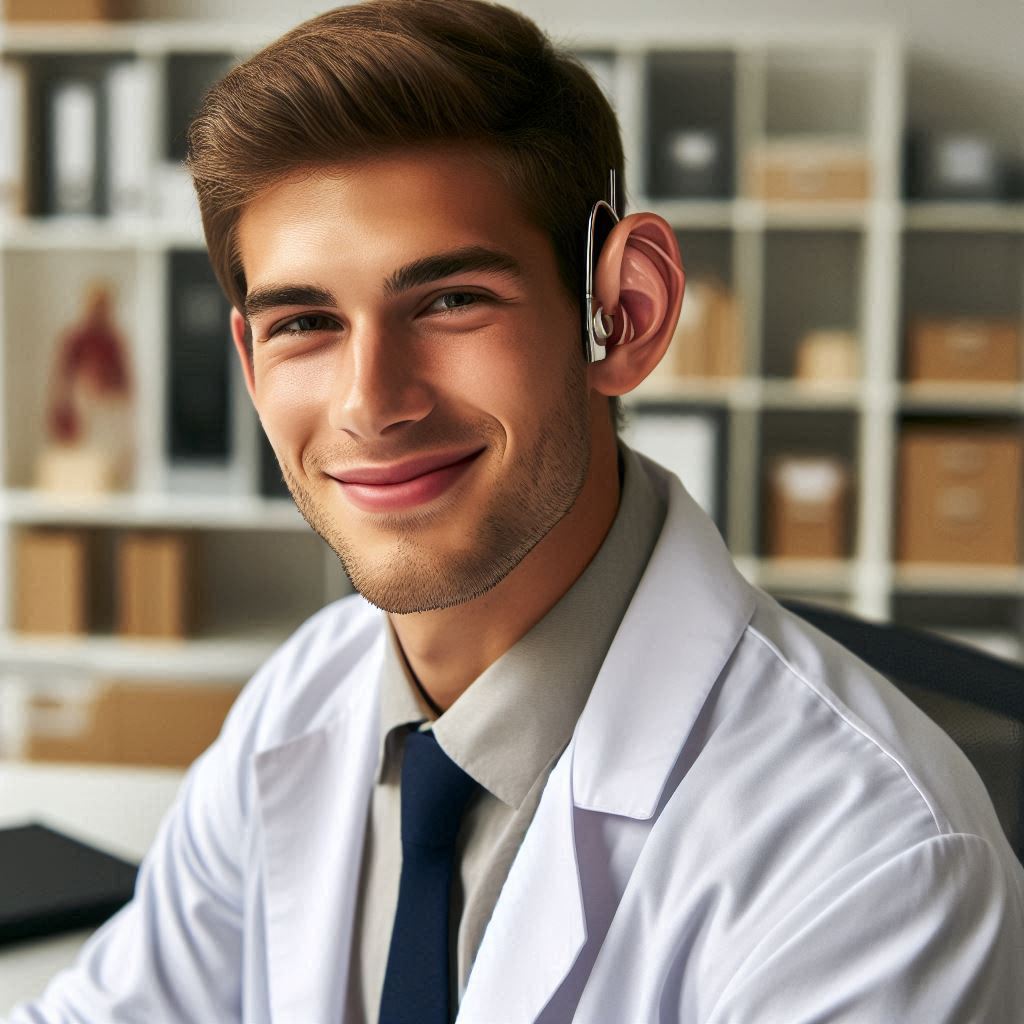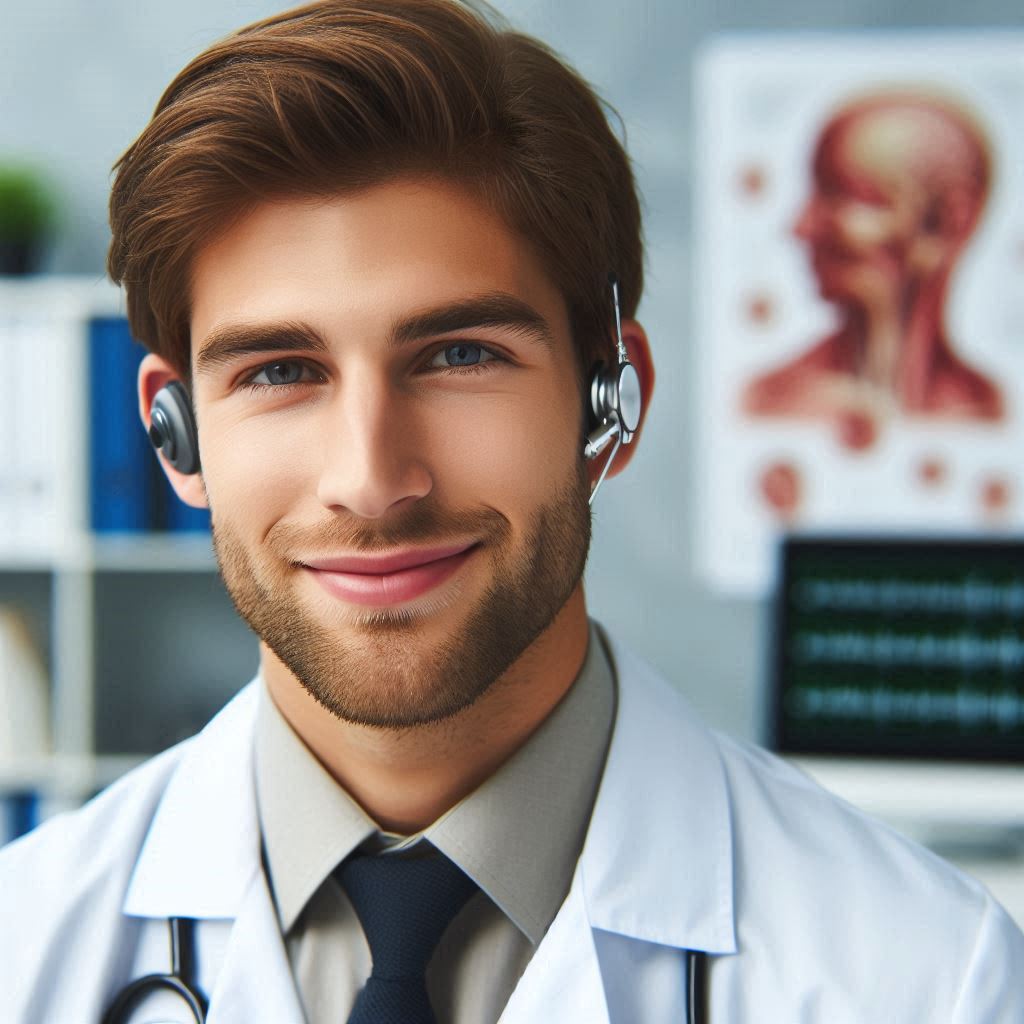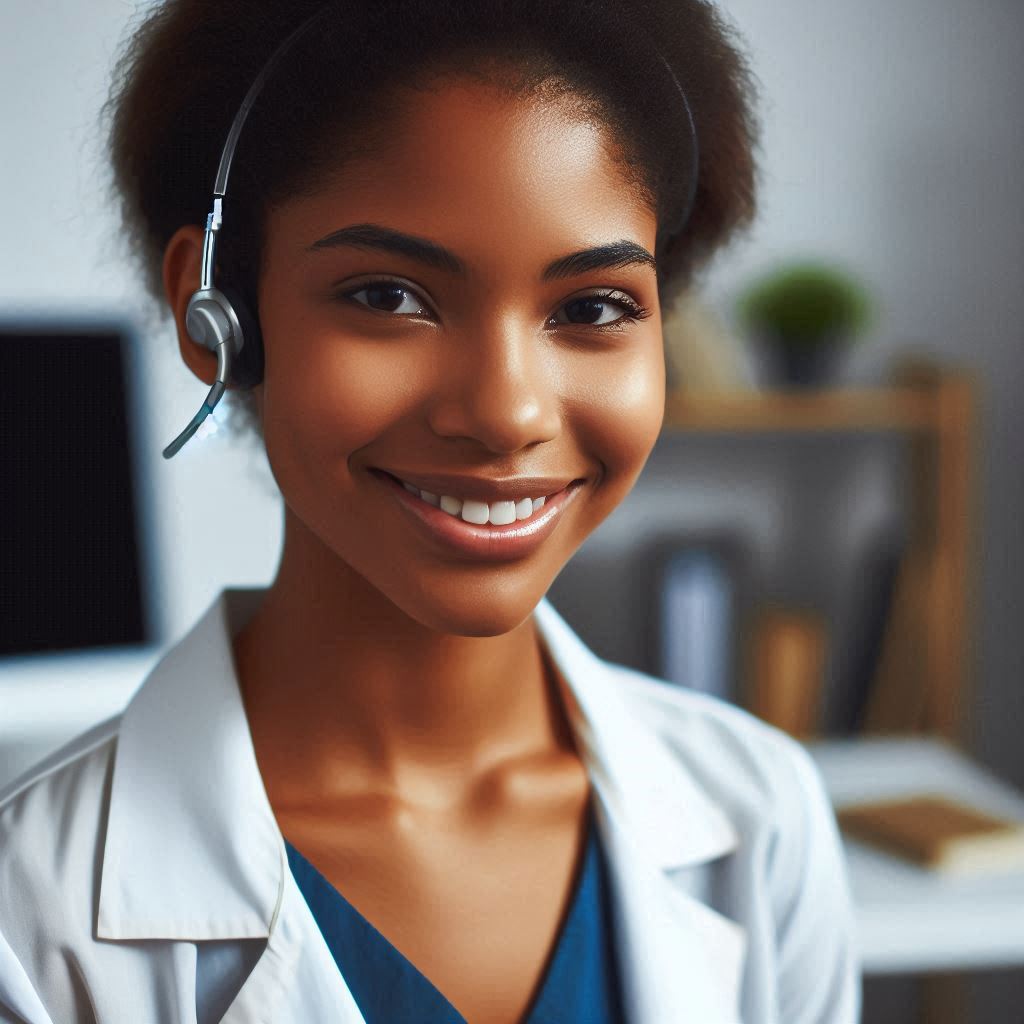Introduction
Audiology focuses on hearing and balance disorders, playing a crucial role in healthcare.
It enhances communication and quality of life for individuals with hearing loss.
Audiologists diagnose, manage, and treat hearing and balance disorders using advanced technology and specialized techniques.
They work with patients of all ages, from newborns to the elderly.
Their expertise is vital in early detection and intervention, which can prevent further complications.
Technology is significantly transforming the field of audiology.
Innovations in hearing aids, cochlear implants, and diagnostic tools have revolutionized treatment and diagnosis.
Modern hearing aids are more discreet and effective, offering features like noise reduction and wireless connectivity.
Cochlear implants have become more sophisticated, providing better hearing outcomes for individuals with severe hearing loss.
Additionally, teleaudiology enables remote hearing assessments and consultations, increasing accessibility to audiology services.
Artificial intelligence (AI) is also shaping the future of audiology.
AI-powered hearing aids can adapt to different listening environments, providing personalized sound experiences.
Machine learning algorithms improve the accuracy of diagnostic tests and treatment plans.
AI can analyze large datasets to identify patterns and predict outcomes, enhancing patient care.
Moreover, advancements in genetics and genomics offer new insights into the causes of hearing loss.
Genetic testing can identify individuals at risk and guide personalized treatment plans.
Regenerative medicine and stem cell research hold promise for restoring hearing in the future.
In essence, the future of audiology is bright, with technology driving significant advancements.
Emerging trends and innovations promise to improve diagnosis, treatment, and patient outcomes.
Audiologists will continue to play a vital role in integrating these technologies into clinical practice, ensuring that individuals with hearing loss receive the best possible care.
Transform Your Career Today
Unlock a personalized career strategy that drives real results. Get tailored advice and a roadmap designed just for you.
Start NowTelemedicine and Remote Hearing Care
How telemedicine is revolutionizing the field of audiology
Telemedicine is transforming audiology by making hearing care more accessible.
Audiologists can now conduct virtual consultations, eliminating the need for in-person visits.
This approach saves time and reduces travel-related barriers for patients.
Through video calls and digital tools, audiologists can diagnose and monitor hearing conditions effectively.
Telemedicine also allows for real-time adjustments to hearing aids. This ensures patients receive immediate care and support.
The integration of telehealth in audiology enhances patient engagement and adherence to treatment plans.
It also facilitates continuous monitoring, which leads to better outcomes.
Benefits of remote hearing care for patients
Remote hearing care offers numerous advantages to patients. It provides easy access to audiologists, especially for those in remote areas.
Patients no longer need to travel long distances for appointments. This convenience saves time and reduces the stress associated with travel.
Remote care also allows for flexible scheduling, accommodating patients’ busy lives. Additionally, it reduces the waiting time for appointments.
Patients can receive timely interventions, which can prevent the progression of hearing loss.
Teleaudiology also promotes personalized care, as audiologists can monitor and adjust treatment plans more frequently.
Examples of teleaudiology platforms and their success stories
Several teleaudiology platforms have achieved significant success. One such platform is Audicus, which provides online hearing tests and consultations.
Audicus has helped many patients receive affordable, high-quality hearing aids without visiting a clinic.
Another example is HearX Group, which offers mobile health solutions for hearing care.
Their app, HearZA, enables users to screen their hearing and connect with audiologists remotely.
HearX Group has reached thousands of users worldwide, improving hearing health accessibility.
A third example is TeleAudiology Network, which connects audiologists with patients globally.
They provide comprehensive teleaudiology services, including hearing assessments and device fittings.
These platforms demonstrate the effectiveness and potential of telemedicine in audiology.
Transform Your Career Today
Unlock a personalized career strategy that drives real results. Get tailored advice and a roadmap designed just for you.
Start NowRead: How Audiologists Help Improve Quality of Life for Patients
Artificial Intelligence in Hearing Aids
How AI is being integrated into hearing aid technology
Artificial intelligence is revolutionizing the field of audiology by enhancing the capabilities of hearing aids.
AI technology is being seamlessly integrated into hearing aids to provide users with personalized and advanced features.
By leveraging AI algorithms, hearing aids can now analyze and adapt to a user’s environment in real-time, offering a more customized listening experience.
This integration of AI allows for the optimization of sound processing and noise reduction, resulting in improved speech clarity and overall sound quality.
Benefits of AI-powered hearing aids
AI-powered hearing aids offer a multitude of benefits to users, significantly enhancing their overall hearing experience.
These devices can automatically adjust settings based on the user’s preferences and the surrounding environment, providing a seamless transition between different listening situations.
By utilizing AI algorithms, hearing aids can filter out background noise, amplify speech signals, and personalize sound frequencies to cater to individual hearing needs.
This results in improved speech understanding, increased comfort, and enhanced overall sound quality for users.
Examples of AI algorithms improving sound quality for users
- Noise Reduction: AI algorithms can effectively distinguish between speech and background noise, filtering out unwanted sounds to enhance speech clarity.
- Adaptive Sound Control: AI-powered hearing aids can dynamically adjust volume levels and sound settings based on the user’s listening environment, ensuring optimal performance in various situations.
- Feedback Suppression: AI algorithms can detect and eliminate feedback whistling in real-time, providing users with a more comfortable and seamless listening experience.
- Personalized Hearing Profiles: AI technology allows for the creation of personalized hearing profiles, optimizing sound quality based on individual preferences and hearing capabilities.
- Social Interaction Enhancement: AI-powered hearing aids can improve speech intelligibility in social settings by focusing on enhancing speech signals while reducing background noise, facilitating better communication.
Overall, the integration of artificial intelligence into hearing aid technology represents a significant advancement in audiology, offering users a more personalized, adaptive, and high-quality hearing experience.
With the continuous development of AI algorithms and technology, the future of audiology is poised to witness further innovations that will continue to enhance the lives of individuals with hearing loss.
Read: What to Expect During Your First Audiology Appointment
Growth of Personalized Hearing Solutions
Trend towards personalized hearing solutions
The trend towards personalized hearing solutions is becoming increasingly prominent in audiology.
Customized hearing devices are essential for meeting the unique needs of individuals with hearing loss.
Personalized fitting ensures optimal comfort and performance for the wearer.
Customized settings cater to specific hearing requirements, enhancing user experience.
Individualized solutions address varying degrees and types of hearing loss accurately.
Importance of Customized Hearing Devices
Tailored hearing devices play a significant role in improving the quality of life for individuals with hearing impairments.
Personalized solutions offer a higher level of precision and effectiveness in addressing hearing issues.
Custom-fit devices are more comfortable to wear, reducing discomfort and ensuring long-term usage.
Transform Your Career Today
Unlock a personalized career strategy that drives real results. Get tailored advice and a roadmap designed just for you.
Start NowIndividualized features optimize hearing performance in different environments and listening scenarios.
Case Studies of Successful Outcomes
Numerous case studies highlight the positive impact of personalized hearing solutions on individuals with hearing loss.
A patient with severe hearing loss experienced a significant improvement in communication and social interactions with a custom-fit hearing aid.
An individual with noise-induced hearing loss benefited from personalized settings that enhanced speech clarity and reduced background noise.
A child with congenital hearing impairment achieved better academic performance and social integration with a customized cochlear implant.
Read: Common Myths and Facts About the Audiology Profession

Advancements in Cochlear Implants:
Explanation of recent advancements in cochlear implant technology
Cochlear implants have come a long way since their inception.
Recent advancements in technology have made them more efficient and effective in restoring hearing for individuals with severe to profound hearing loss.
Benefits of new cochlear implant features for hearing-impaired individuals
The latest cochlear implant features offer improved sound quality, better speech understanding, and enhanced comfort for users.
These advancements have significantly enhanced the overall quality of life for those with hearing impairments.
Real-life stories of individuals benefiting from advanced cochlear implants
There are many inspiring stories of individuals who have experienced life-changing improvements in their hearing abilities thanks to advanced cochlear implants.
These individuals have regained their independence, confidence, and connection to the world around them.
In general, advancements in cochlear implant technology have revolutionized the way we treat hearing loss.
With ongoing research and development, we can expect even more exciting innovations in the future that will continue to improve the lives of individuals with hearing impairments.
Read: How Audiologists Support Patients with Cochlear Implants
Use of Virtual Reality in Auditory Rehabilitation
Virtual reality (VR) technology is revolutionizing the field of auditory rehabilitation by providing innovative solutions for individuals with hearing impairments.
Let’s explore how VR is being used in auditory rehabilitation and the benefits it offers:
Overview of how virtual reality is being used in auditory rehabilitation
In auditory rehabilitation, virtual reality simulations are utilized to create real-life scenarios that mimic different listening environments.
These simulations help individuals with hearing loss to practice communication skills in various settings, such as noisy restaurants or crowded public spaces.
By immersing patients in these virtual environments, audiologists can assess their listening abilities and tailor treatment plans accordingly.
Transform Your Career Today
Unlock a personalized career strategy that drives real results. Get tailored advice and a roadmap designed just for you.
Start NowBenefits of VR simulations for improving hearing abilities
- Enhanced engagement: VR simulations provide an interactive and engaging platform for auditory rehabilitation, making therapy sessions more enjoyable for patients.
- Personalized treatment: VR technology allows audiologists to customize rehabilitation programs based on individual needs and progress levels, leading to more effective outcomes.
- Realistic experiences: By simulating realistic listening environments, VR helps patients learn to navigate challenging situations and improve their communication skills in a safe and controlled setting.
- Measurable progress: With VR, audiologists can track patients’ progress more accurately and objectively, enabling them to adjust treatment plans as needed and monitor improvements over time.
Success stories of patients who have benefited from VR auditory rehabilitation programs
Many patients have reported significant improvements in their hearing abilities and quality of life after undergoing VR auditory rehabilitation programs.
One such success story is that of Sarah, a 45-year-old woman with sensorineural hearing loss.
Sarah struggled to communicate in noisy environments and often felt isolated in social settings.
After participating in a VR rehabilitation program that targeted her specific listening challenges, Sarah noticed a marked improvement in her ability to hear and understand speech in various situations.
She felt more confident in social interactions and reported a renewed sense of independence and empowerment.
Sarah’s success story is just one example of how VR technology is transforming auditory rehabilitation and helping individuals with hearing impairments lead fulfilling lives.
Sustainability and Eco-friendly Practices in Audiology
As the world continues to focus on sustainability and reducing carbon footprints, it is crucial for the audiology industry to evaluate its impact on the environment and adopt eco-friendly practices.
Sustainability in audiology not only benefits the planet but also contributes to the well-being of patients and professionals in the field.
Importance of Sustainability in the Audiology Industry
Sustainability in audiology is essential to minimize waste, conserve resources, and promote a healthier environment.
By implementing eco-friendly practices, audiology clinics can reduce their ecological footprint and create a more sustainable future for generations to come.
Examples of Eco-friendly Practices Being Adopted by Audiology Clinics
- Utilizing energy-efficient equipment and technologies to reduce energy consumption
- Implementing paperless systems and electronic health records to minimize paper waste
- Using eco-friendly hearing aid batteries that are recyclable and non-toxic
- Promoting telehealth services to reduce travel and carbon emissions
- Partnering with suppliers and manufacturers that prioritize sustainability in their products
Ways in Which Audiology Professionals Can Contribute to a Greener Future
- Engaging in community outreach programs to educate the public on sustainable practices
- Participating in environmental advocacy initiatives to promote eco-conscious policies
- Attending conferences and workshops on sustainability in audiology to stay informed and inspired
- Supporting research and innovation in eco-friendly technologies for hearing care
- Collaborating with other healthcare professionals to integrate sustainability into patient care
By embracing sustainability and eco-friendly practices, audiology professionals can play a significant role in shaping a greener future for the industry.
Together, we can make a positive impact on the environment while providing quality care to individuals with hearing loss.
Conclusion
The future of audiology is being shaped by key trends and innovations that are revolutionizing the field.
From advanced hearing aid technologies to virtual telehealth services, audiology is moving towards a more integrated and patient-centered approach.
Audiologists are encouraged to embrace these technological advancements and innovations in their practice to provide better care and outcomes for their patients.
By leveraging these tools, audiologists can enhance their diagnostic capabilities, treatment options, and overall patient experience.
It is essential for audiologists to stay updated on emerging trends in the field of audiology to remain competitive and offer the best possible care to their patients.
Continuing education, attending conferences, and networking with other professionals are ways to ensure audiologists are at the forefront of the latest developments in audiology.
As we look towards the future, it is clear that audiology will continue to evolve, driven by advancements in technology and innovative approaches to hearing healthcare.
Audiologists play a crucial role in this transformation by adopting new practices and staying informed on the latest trends shaping the field of audiology.
Transform Your Career Today
Unlock a personalized career strategy that drives real results. Get tailored advice and a roadmap designed just for you.
Start Now[E-Books for Sale]
The Big Book of 500 High-Paying Jobs in America: Unlock Your Earning Potential
$19.99 • 500 High-Paying Jobs • 330 pages
Explore 500 high-paying jobs in America and learn how to boost your career, earn more, and achieve success!
See All 500 High-Paying Jobs of this E-Book
1001 Professions Without a Degree: High-Paying American Jobs You Can Start Now
$19.99 • 1001 Professions Without a Degree • 174 pages
Discover 1001 high-paying jobs without a degree! Unlock career tips, skills, and success strategies for just $19.99!




